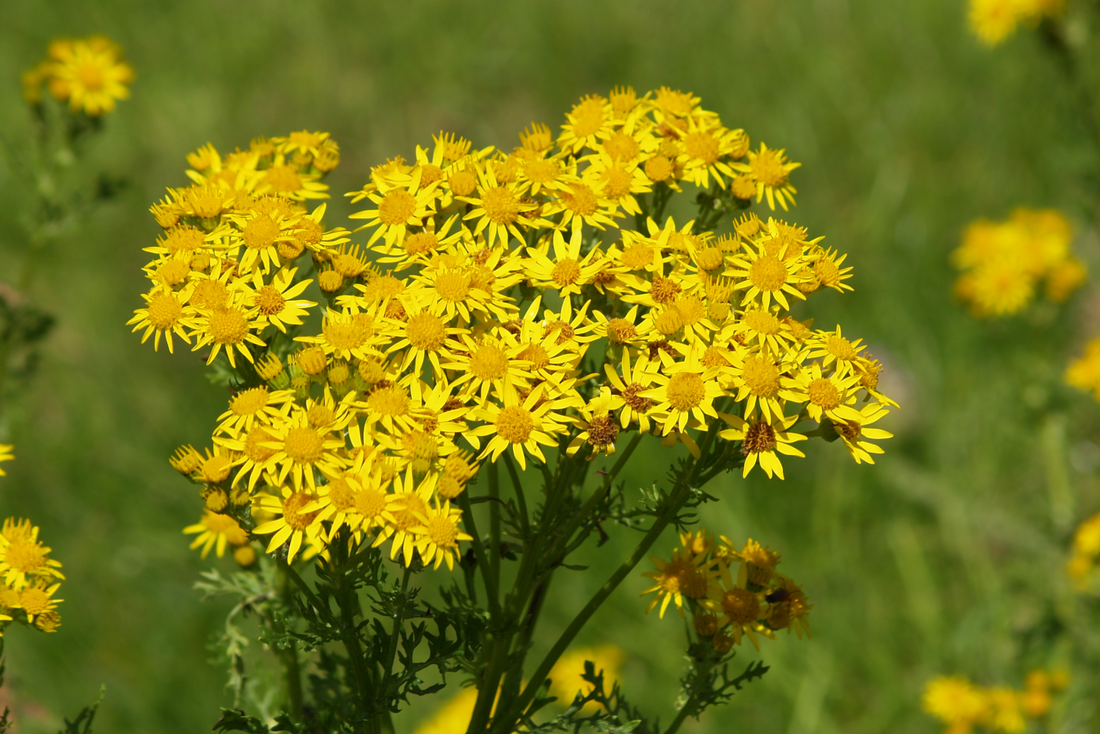Weeds and Poisonous Plants in Horse Pastures

Written by Briony Witherow MSc RNutr. FHEA
Blog 1 of 2 on management of weeds in pasture.
Good quality grass is the cheapest and healthiest feed source for horses, but weeds and poisonous plants can quickly reduce both the quantity and safety of grazing. For horse owners, the key is being able to identify what is useful, what is undesirable, and what is dangerous.
What Counts as a Weed?
A weed is simply a plant growing where it’s not wanted. In horse pasture, this can include harmless competitors like thistles and nettles, but also toxic species such as ragwort and buttercups. While horses are selective grazers and usually avoid poisonous plants, risks rise when:
- Pastures are overgrazed and grass is scarce.
- Horses are newly introduced to a field.
- Horses are confined or bored.
- Toxic plants are present in hay or haylage.
Plants to Avoid
- Ragwort (Senecio jacobaea) – the most significant poisonous plant for horses in the UK, responsible for over 90% of DEFRA complaints on injurious weeds. Its toxic alkaloids remain active when dried, making hay a key risk.
- Hemlock (Conium maculatum) – often mistaken for cow parsley, distinguished by shiny leaves and purple blotches on stems.
- Acorns and Oak buds (Quercus) – high-risk in spring and autumn.
- Sycamore seeds/seedlings (Acer pseudoplatanus) – cause atypical myopathy.
- Foxgloves (Digitalis purpurea) – contain cardiac glycosides.
Plants to Minimise
- Buttercups (Ranunculus repens) – toxic when fresh, but less so in hay/haylage. Prolific where soil is compacted or acidic.
- Clover (Trifolium species) – nutritious but can accumulate sugar and mycotoxins. Best limited to <20% sward cover.
Safe in Moderation / Beneficial Browse
- Nettles, cleavers, thistles, dandelions – often eaten by horses and rich in minerals.
- Hedgerow species like hawthorn, hazel, and blackberry leaves can provide natural enrichment.
Pasture Management Basics
- Maintain appropriate stocking density (1–1.5 acres per horse) – this guideline is often quoted, but it should always be interpreted in context. Soil type, grazing regime, and management practices all influence how much land is needed. Free-draining soils will withstand more pressure than heavy clays, which poach easily. Horses turned out only for a few hours a day may thrive on 1 acre per horse, but for those out 24/7 year-round, particularly on clay soils, more land will be required. Rotating paddocks, resting fields, and maintaining pasture structure all help balance stocking density. Overstocking reduces grass growth, increases weed invasion, and raises the risk of horses consuming toxic plants out of hunger or boredom.
- Rotate grazing and rest paddocks.
- Test soil every 3–5 years (minimum); aim for pH 6–7.
- Address compaction, especially around gateways and troughs.
- Topping and harrowing can help suppress weeds before they seed.
Take-Home Message:
Weeds are not just unsightly — they reduce grass yield and can pose serious risks. Weeds are not just unsightly — they reduce grass yield and can pose serious risks. Correct identification is vital: for example, hemlock is often mistaken for cow parsley, but learning the key differences will help keep your pasture safe.
In Part 2, we take a closer look at ragwort — one of the most widespread and dangerous weeds in horse pastures — and explore practical strategies for identification, removal, and long-term control.
